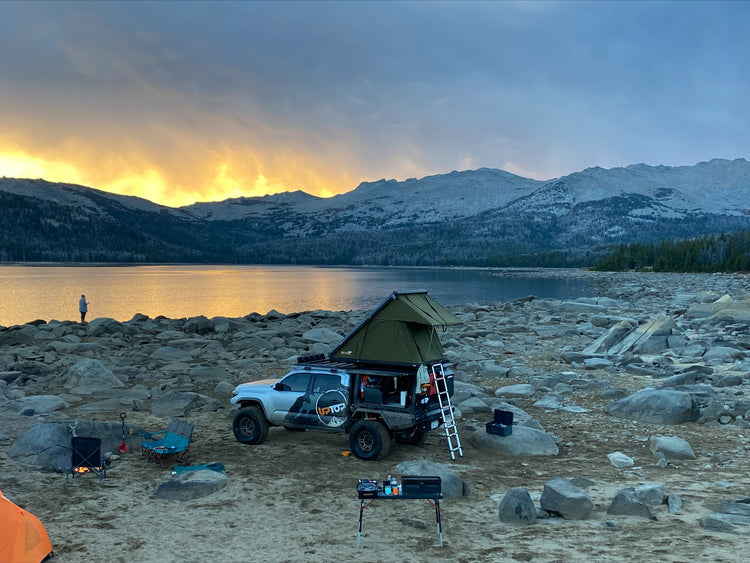Ute update - How do you know if you got it right?

I’ve just returned from my fourth trip with the prototype Ute. In seven days we covered a lot of ground exploring Wyoming taking in the Grand Tetons, Yellowstone and so many things in between. Travelling, or more specifically driving, has never been something I thoroughly enjoy. Being trapped in a truck built for trails on countless miles of interstate is not my idea of a great time but windshield time does give you a chance to think.
I thought a lot about where we started in late 2018 compared to where we are today. When we first began this journey it was really out of necessity. I needed a roof rack, so I made one. I needed a bed rack so I built one of those as well. Banging down a trail in Utah with 40 PSI in my tires (I was lazy) I learned a valuable lesson about welded aluminum. My bed rack looked the part. My welds told an entirely different story. I had a lot to learn.
I ratchet strapped what was left of my bed rack to my Tacoma to finish my trip and chalked it up as a learning experience but I’d be lying if I said I didn’t spend the rest of the trip and the entire drive home thinking about what I had gotten wrong. I came to terms with the fact that I was not yet a great welder, or even a good one, but I couldn’t help but think there was more to it than that.
That bed rack failure might have been the best thing that ever happened to me from an engineering standpoint. Was it embarrassing? Sure. Does it stay with me now every time I sit down to start the design of a new product? You can bet your ass that it does.
When you get the opportunity to see the Ute in person and you are reading this blog you will see in real life what that experience did for me. Every piece of the Ute was overbuilt. The stress models for a product like this will only take you so far. It’s difficult to compensate for the additional cargo loads, the twisting and turning, and the vibrations encountered on the trails we love to explore. So how do you know that you’ve got it right? You try and destroy it. You load it with more gear than you need. You’ve got to knowingly exceed the weight specifications. You don’t go slow, you go fast. You don’t avoid obstacles, you seek them out. Basically you hammer the product as hard as you can for as long as you can and you try and break it. It might actually be my favorite part of my job now.
Every night you get your tools out and you check the hardware, inspect welds, and verify your torque specifications. You have to crawl over every inch of your creation and find weak spots. Did the hardware stay tight? How are the door seals? Latches good? What about the factory mounting locations? I’ve got a lot of miles on the Ute and there are no weak spots.
So yeah, I saw mountains, geysers, and a bear but I also saw the Ute do what it was made for.
